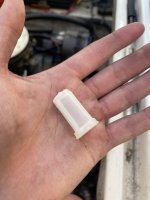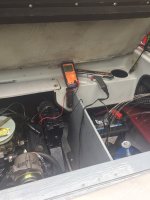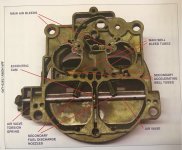timing is setting when the #1 spark plug fires, in relation to top dead center, it is adjustable by turning the distributor which is normally held still by a clamp, idle is just the idle speed. I think you need to get a factory shop manual it will be very helpful. Start reading on how basic breaker point igntion systems work. Then read up on carburators. If you have a Rochester Quadrajet that is a pretty complex carb, not really for beginners. I've been doing this stuff since I was about 16, that's 50 years lol. To me it is second nature.
Dwell angle, timing, idle speed.
Its easy for people my age because all that old technology in your boat, was new technology in our cars, 50 years ago, lol! We had the same Chevy 350 cu in engines with Rochester carbs, and points distributors as our daily drivers. Either you learned how to fix it, paid to get it fixed, or got stuck somewhere. Knowledge was a good thing to have!

























